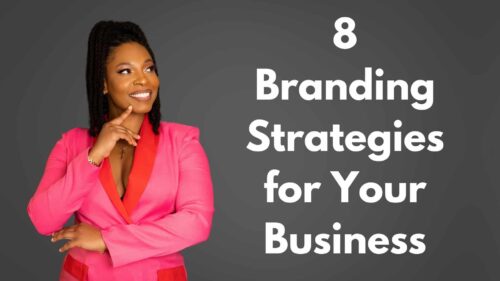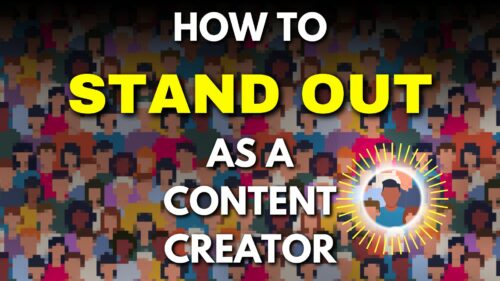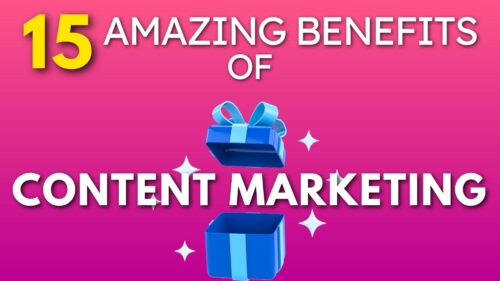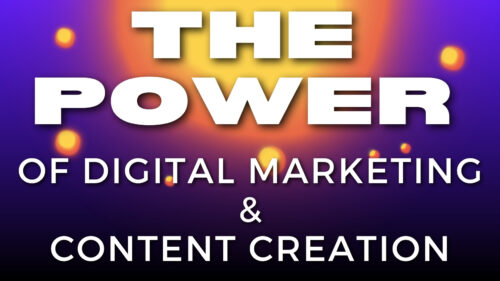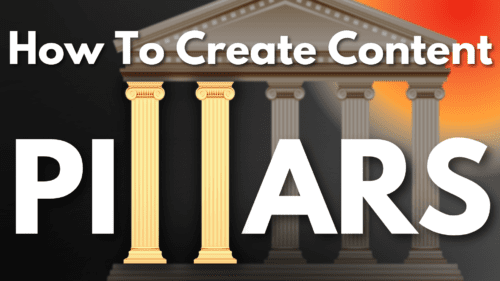What is Content Creation?
Have you ever asked yourself what is content creation?
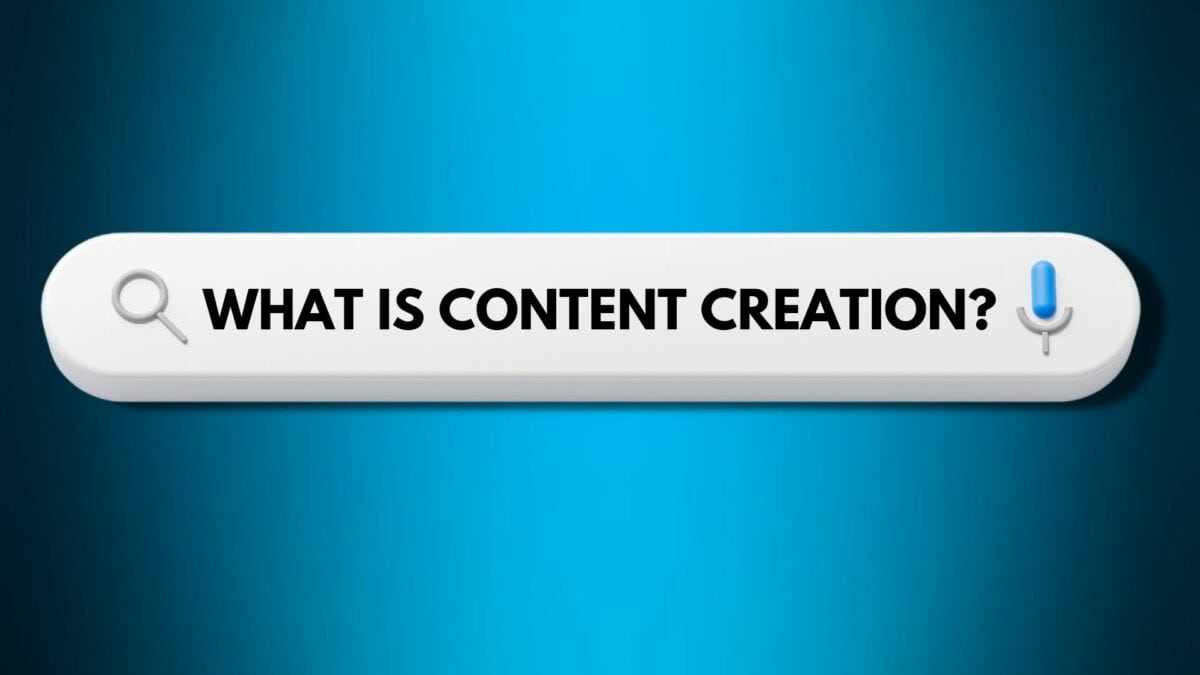
Content creation is creating and publishing information that can be shared online across various platforms.
Creating and sharing content consistently helps increase your brand’s visibility, engagement, and sales – all at the same time!
And whether you’re a business or an individual, content creation allows you to:
- Share Valuable Insights
- Educate Your Target Audience
- Build Trust Through Storytelling
- Provide Updates On Industry Trends
- Establish Yourself As A Expert And Thought Leader
- Create Relationships With Your Audience And So Much More
Content creation can help you attract new customers while keeping old ones by providing them with valuable information and solutions to their problems in a unique way.
But that doesn’t mean it’s easy.
Creating content can be hard and feel overwhelming when you factor in maintaining multiple platforms and creating different content.
So, in this blog post, we’ll give you ALL the information you need so you can create amazing content that’ll grab the attention of your audience.
We’ll cover what content creation involves, strategies, and tips for you to create effective pieces of content.
What is Content Creation?
In case you missed it, content creation is the process of producing and publishing web content, such as blog posts, videos, podcasts, or other forms of media.
Content creators typically research topics in their industry and create content that will either educate, inform, inspire, entertain, or promote to their audience.
Whatever the goal is through producing content, it’ll always be an important part of digital marketing because it helps build relationships with potential customers, creates brand awareness, and boosts website traffic.
What Makes Content Good or Bad?
The answer to this question lies in the amount of effort that goes into your content creation, as well as how your audience responds to it.
Good content is well-researched and provides value to the RIGHT consumer.
It should target, engage, and be platform-specific (depending on where your audience is).
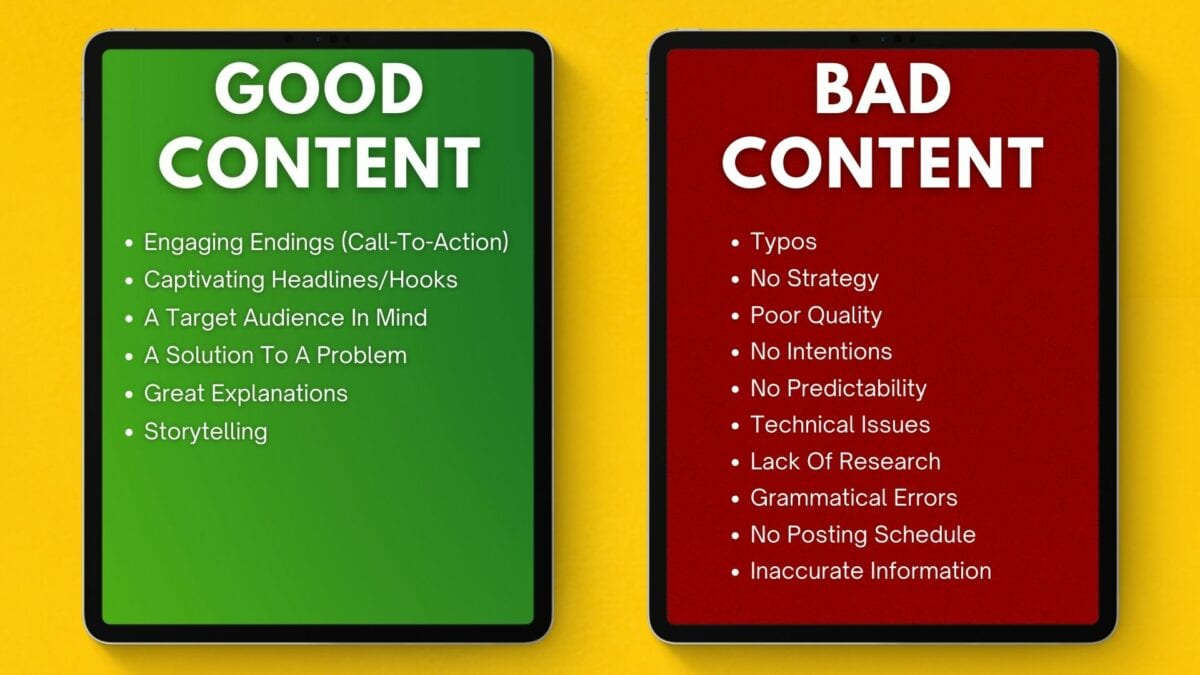
If your content has these poor characteristics, you’ll receive very little engagement and no trust from your audience.
To be a great content creator, you should always strive to produce high-quality content and communicate in a way that makes them remember you!
Best Practices You Should Follow When Creating Content
When creating content, know who your target audience is.
Research Their:
- Needs
- Culture
- Interests
- Problems
- Questions
- Pain Points
- Strengths & Weaknesses
Tailor Your Content Creation Process To What They Need/Want To See:
- Solutions To Their Problems
- Answers To Their Questions
- Knowledge/Education
- Entertainment
- Inspiration
Then, make sure your message is clear from the start and grab their attention with a great hook.
Structure it in an easy-to-follow format so your audience doesn’t get overwhelmed or lost during the content.
How Does Content Creation Benefit Me?
1. Creating Content Leads To More Engagement
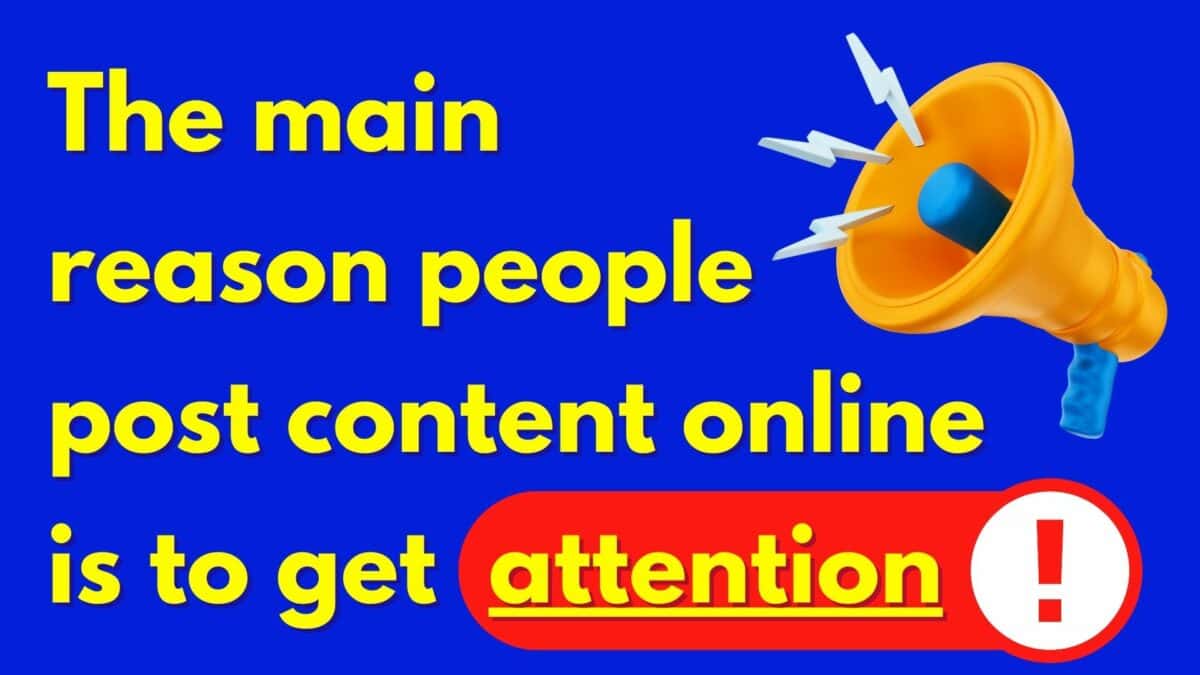
In some way, shape, or fashion, we all post on platforms for the attention of others no matter what our agenda is.
We All Want:
- More likes
- More followers
- Make more sales
- Spread awareness
- More customers or clients
- To Build a community/fan base
- Drive traffic to a website, etc.
So it’s no surprise that one of the primary benefits of content creation (when done correctly) is increased engagement with target audiences.
When posting your content on social media platforms, rather than thinking about them as the internet full of strangers, treat your content like you’re posting in a private Facebook group or speaking to a friend.
If you post with the mindset that your audience already exists and is present, it’s much easier to post content publicly with intention and authenticity.
2. Showcases Your Expertise
Content creation can also help spread your expertise in your industry or niche.
Not only is it a great idea to share your knowledge and expertise with the world, but when you regularly create and publish content, you naturally want to research and learn about new topics related to your industry.
Or to at least stay on top of trends and fact-check your content.
This is great in terms of personal development—whether you’re an expert double-checking your information, or a novice who continuously learns about your industry.
You can demonstrate your trustworthiness to your audience by publicly backing up your content/info with other credible sources.
3. Helps You to Generate Leads
Content creation can generate leads for your brand or business.
This is because when people find your content valuable, they’re more likely to want to learn more about your products or services.
There are prerequisites to creating content for promotional purposes though.
No one wants to be sold something right away. Before your audience gives you their money, they need to:
- Build trust with you
- View you as an expert
- Be the RIGHT target audience
- Have a problem that your product or service solves
- Know you value them and aren’t trying to just sell to them
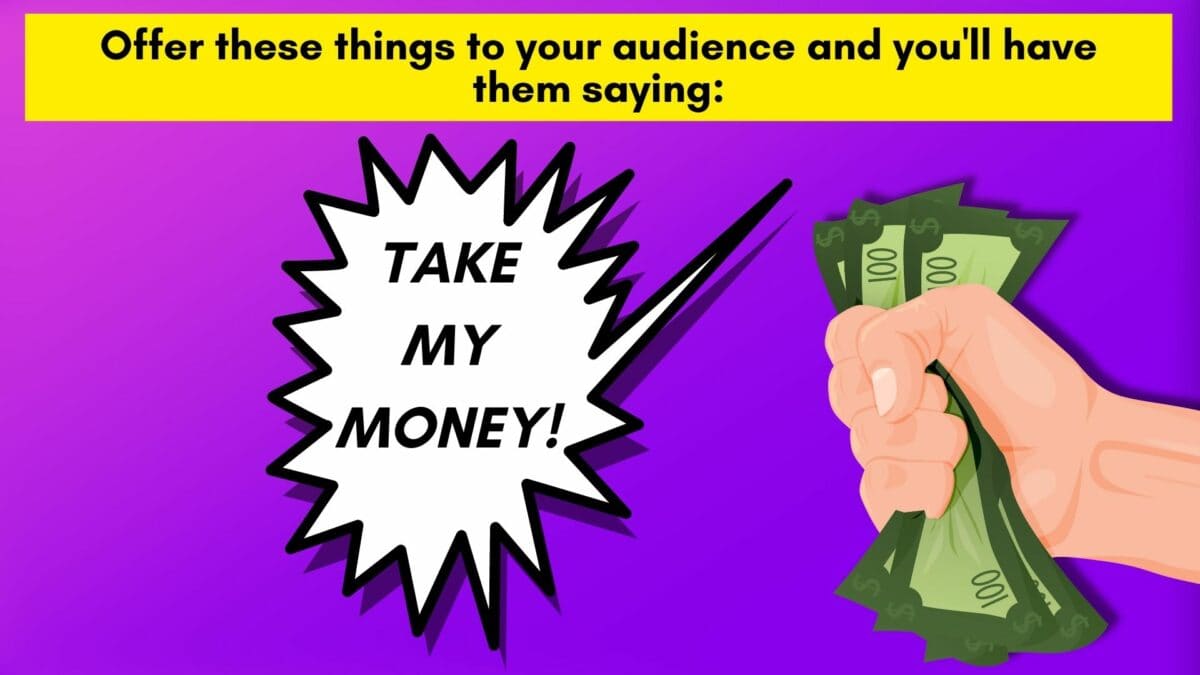
And, when you include a call-to-action in your content, you can encourage people to take the next step and contact you about your product or service.
4. Helps You Save Money
Content creation can also help you save money on marketing costs. This is because when you have high-quality content formatted to the platforms, you’re less likely to need to pay for advertising.
People will find you and your content organically through search engines or social media channels.
And, when you create evergreen content (content that remains relevant over time), you can avoid the need for constant updates, which can save you both time and money.
Types of Content
There are different types of content that you can create for your brand or business. They include:
- Written Content
- Visual Content
- Audio Content
- And Interactive Content
Written content can include blog posts, articles, whitepapers, e-books, web copy, and more.
Visual pieces of content include images, graphics, videos, and animations.
Audio content includes podcasts and audio snippets.
Interactive content is all about engaging your audience with activities such as quizzes, games, and surveys. Social media platforms often create interactive features for creators to add to their content to encourage more interaction and engagement with their audience.
Pro Tip: If you ever want to grow on a specific platform, incorporate new interactive buttons and features into your content. They promote and push out people’s content who DO use those features to compete with other platforms.
Each type of content has its strengths and weaknesses, so you should consider what type of content best fits your specific skills and your audience’s needs.
Content Creation Ideas
The best practice to incorporate into your content creation process would be to time block the steps it takes to produce your content.
This is called a “Workflow” and it varies per person.
Incorporating these into a workflow schedule will make it easier for you to be consistent in all areas of content creation.
Here are a few themes you can use during your brainstorming session:
Entertain Others With Your Content
- Create funny content like jokes, memes, or GIFs
- Share personal stories and experiences
- Use music, videos, and interactive elements
Motivate Readers, Viewers, and Listeners
- Share inspiring quotes and stories
- Provide helpful tips on how to stay focused
- Offer motivational advice for achieving their goals
- Feature individuals who’ve achieved the success your audience is looking for
- Use visuals (such as images, videos, and infographics) to make your content more engaging
Teach Something You Know
- Create tutorial videos
- Record an online course
- Host webinars and Q&A sessions
- Offer one-on-one consultations or coaching services
- Write a blog post or article with step-by-step instructions
Create Something That Makes People Think
- Ask thought-provoking questions in your content
- Talk about trending topics to your audience
- Challenge accepted beliefs and assumptions about your business/industry
- Give people an opportunity to explore their ideas through a creative activity
Designing a Content Creation Strategy
Now that you know the purpose of content and some content ideas to create, it’s time to design a content strategy.
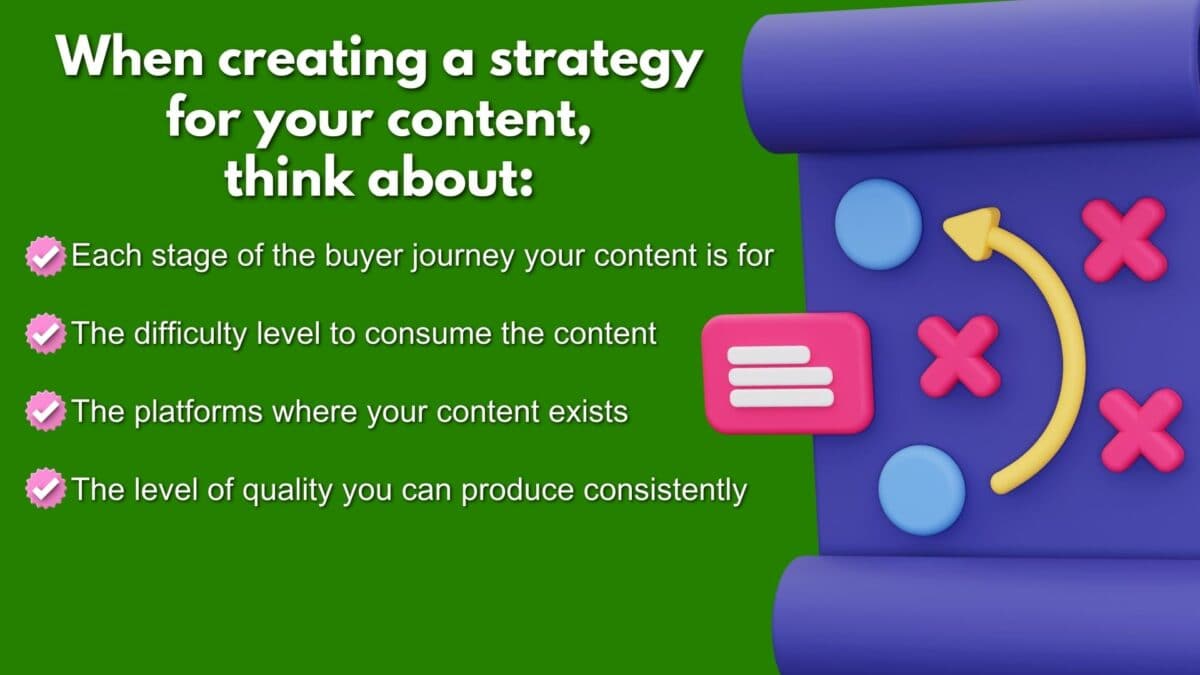
You should tailor your content creation strategy to your business goals, target audience, and budget.
It should also include a timeline for when you’ll publish fresh pieces of content.
Know Your Audience and Industry
Knowing your audience and industry is important when designing a content strategy because it allows you to create content for the specific interests and needs of your target audience.
To do this, start by researching who your audience is by looking at what type of content is already performing well in your industry, so you know what topics are resonating with your target audience.
This will help you create content that’s wanted and valued by the right group of people. And then add your personal twist to the content they want to consume so you have an edge over the competition that posts generic content.
Set a Digital Marketing Goal
Setting a goal for your content is an important step for measuring its effectiveness and return on investment (ROI). To create a successful content strategy, you need a goal.
Here’s a Step-by-step Guide To Setting A Goal For Your Content Strategy:
- Identify The Purpose of Your Content: What do you want to accomplish with your content?
- Set Measurable Goals: Make sure that your goals are measurable and realistic. Examples of goals include increasing website traffic by 5% in the third quarter or getting 100 more subscribers by the end of the month.
- Use The SMART Goal Method: SMART stands for Specific, Measurable, Attainable, Relevant, and Time-based.
- Keep Track Of What Goals You Need To Adjust: If you’re having a hard time achieving your goals, revisit them and think about what you should improve on with your content creation. Such as posting more frequently or bettering the quality of your content.
- Set Deadlines: Set deadlines to help keep you on track and motivated to reach your goals.
Pick a Format
Choosing the right format for your content is just as important as what you’re saying.
Different formats (such as video, audio, or written content) can help you reach your target audience and engage them differently.
Then come up with a content creation workflow.
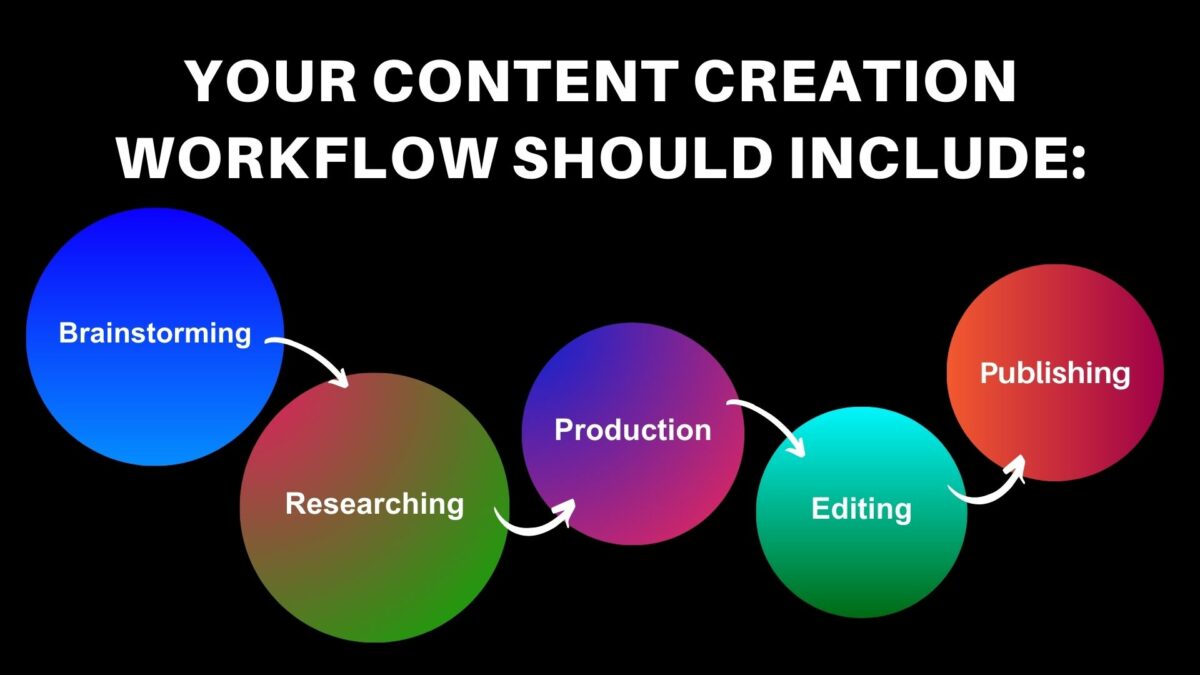
Creating a Content Plan Using Your Content Strategy
Creating a content plan using a content strategy involves breaking your strategy down into smaller, manageable steps.
First, identify the type of content you want to create. This can include blog content, social media posts, videos, podcasts, webinars, or any other type of web content that aligns with your overarching strategy.
Once you’ve identified the content and their respective goals, you should then segment these into topics.
Come up with a few broad ideas for each type of content and decide how often you’d like to publish them.
After deciding on the topics and publishing frequency for each type of content, create a content calendar (I like to keep ours in ClickUp) that lists out all the upcoming topics and deadlines for when they need to be completed.
This will give you an easy-to-follow timeline to stay on schedule consistently.
Finally, review your progress regularly by tracking your metrics and analytics on each platform you’re on. This will show you what works well in your content creation and what isn’t getting your audience’s attention so you can make any necessary changes.
Why Research and Planning Matters When Creating Content
Research and planning are essential for a successful content strategy. Without them, you won’t know who your target audience is or how to reach them.
They’ll also help you develop the confidence and authority needed to speak on important topics.
Research tools, SEO (Search Engine Optimization) tools, planning and management, analytics, social media, writing, image, design, video, and email tools are all essential for creating quality content.
Without these resources and tools, I and other content creators would struggle to produce high-quality content for our audiences.
Social Media Platforms and What Type of Content Should You Create?
Social media platforms are great channels for distributing digital content and engaging with your audience.
Platforms like Facebook, Twitter, Instagram, YouTube, LinkedIn, and Pinterest all offer different opportunities to connect with people. And the type of content you can create for each will vary.
You can and should also make content for your very own website, emails, and newsletters.
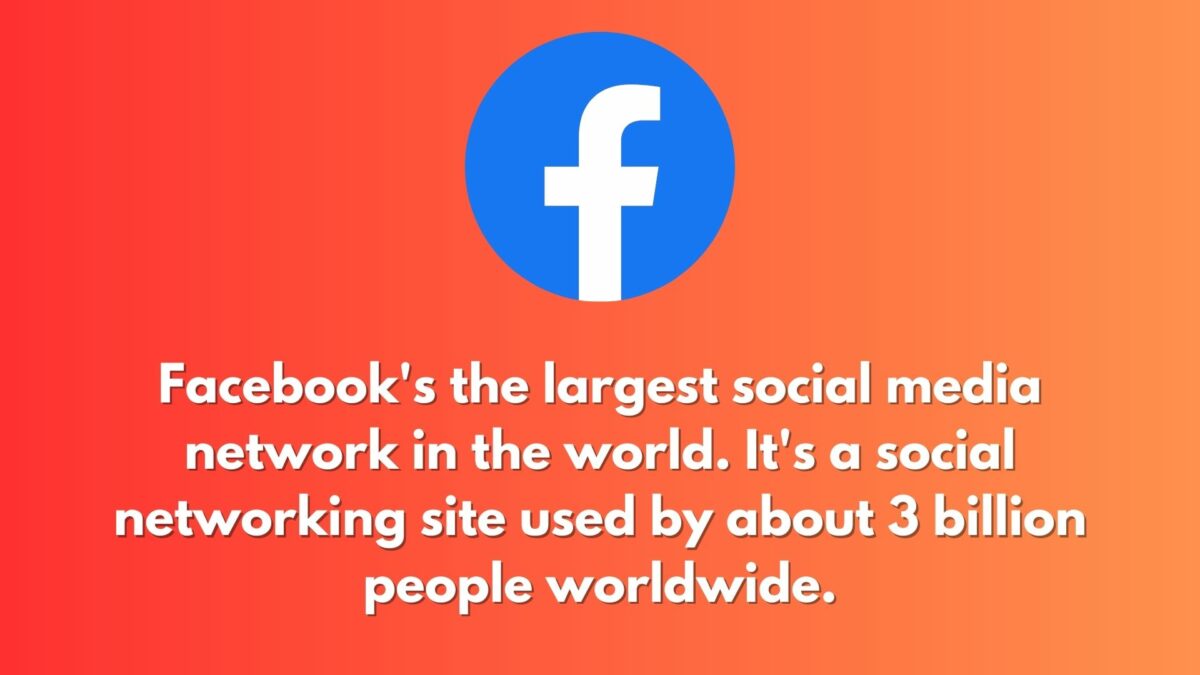
Whether you’re looking to refuel your friendship or make new ones, connect with businesses, or just casually keep up with news and events, Facebook helps you stay connected.
Most people use the platform to share photos, updates, breaking news, business, brand updates, and more with others in the world.
YouTube
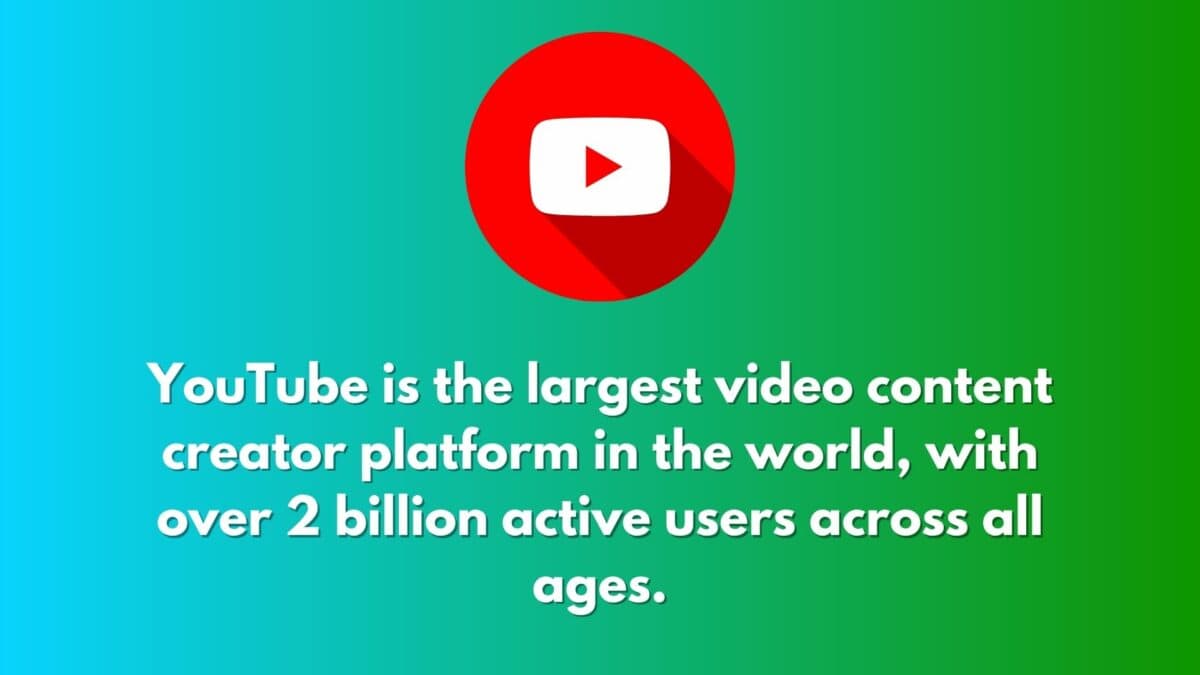
It’s an incredibly powerful video hosting platform for content creators looking to expand their reach, as it allows them to monetize their videos and build a larger audience than they would be able to through traditional methods.
YouTube also offers many analytics tools you can use to measure engagement and interactions in their videos, allowing them to better understand their audience and tailor their content accordingly.
YouTube’s monetization opportunities even allow successful creators to make extra income and gain exposure for their work.
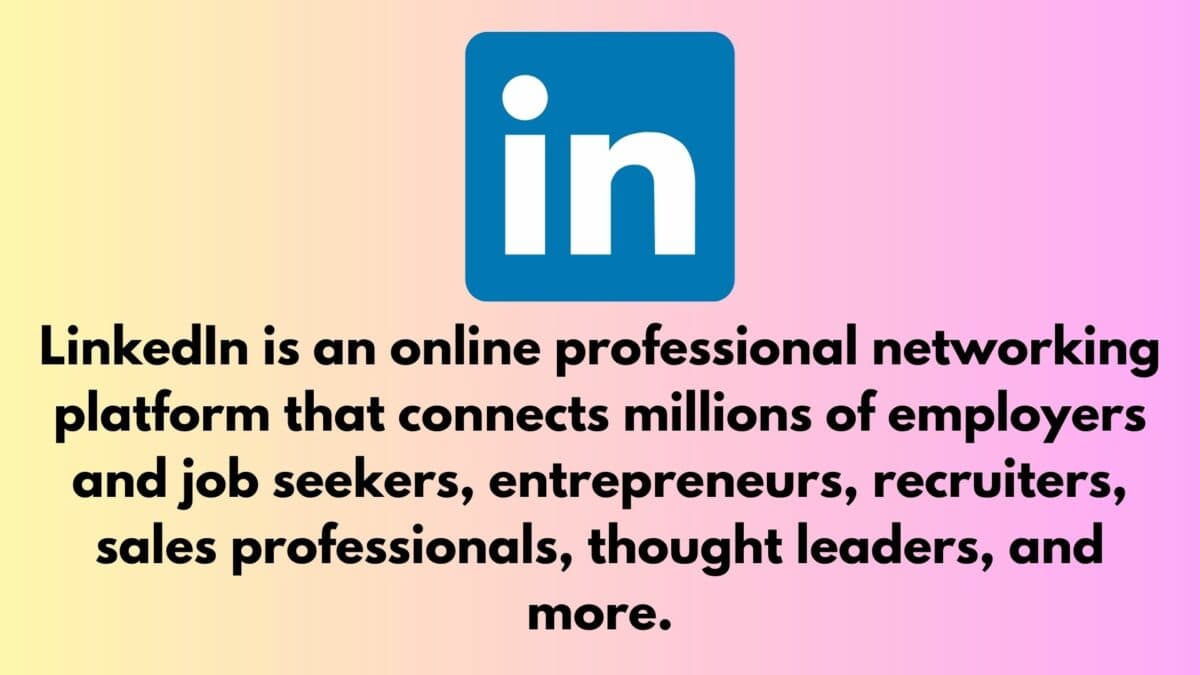
Using LinkedIn when creating content can be very beneficial to the success of your business or career.
By using LinkedIn to post relevant news, articles, and information related to your field of expertise, you can attract new clients and opportunities.
Doing so will increase your visibility among other professionals in your industry, which might lead to referrals and other business prospects.
Also, by participating in group conversations on popular topics or by joining virtual communities filled with experts, you can further develop relationships with like-minded people who may become prospective customers or partners.
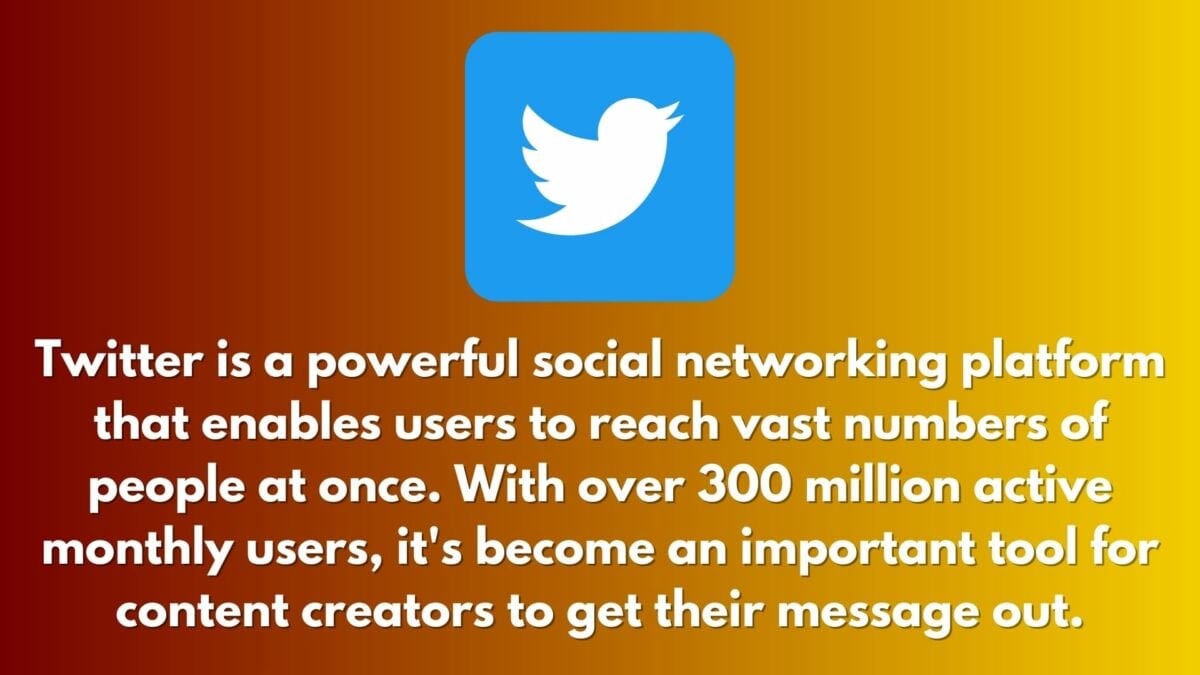
Using Twitter effectively allows you to build relationships and engage with a larger audience than other channels may offer.
It’s an excellent channel to start conversations and get feedback, engage with current and future customers, promote your content and services, as well as network with other industry professionals.
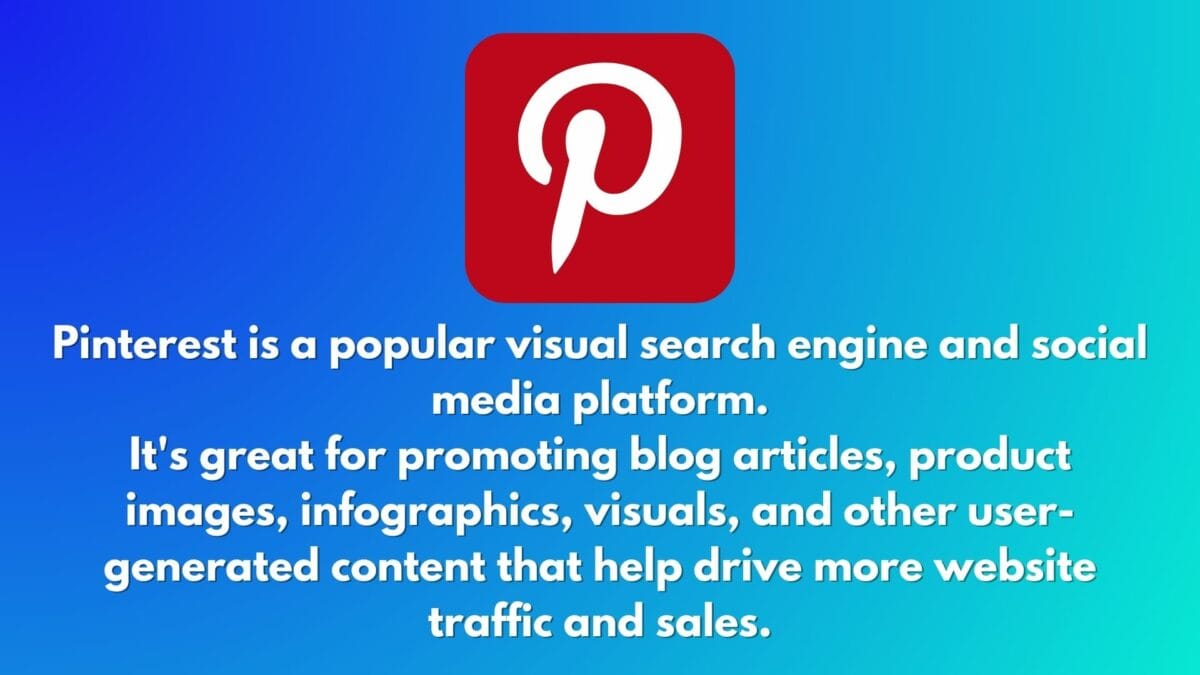
You can create boards and pins that focus on specific topics to generate interest and engagement from other users, as well as get feedback on your content.
By pinning images, articles, videos, and other content onto boards, you can easily keep track of ideas and resources for your content.
You can also add notes and descriptions to each pin, so you can keep track of your ideas and plan out how to turn them into content.
Pinterest boards provide a great way to discover new content and ideas. By browsing other users’ boards and following boards that interest you, you can get inspiration to use during your content creation process.
Pinterest boards are also great for collaborating with other successful content creators.
Websites and Blog Posts
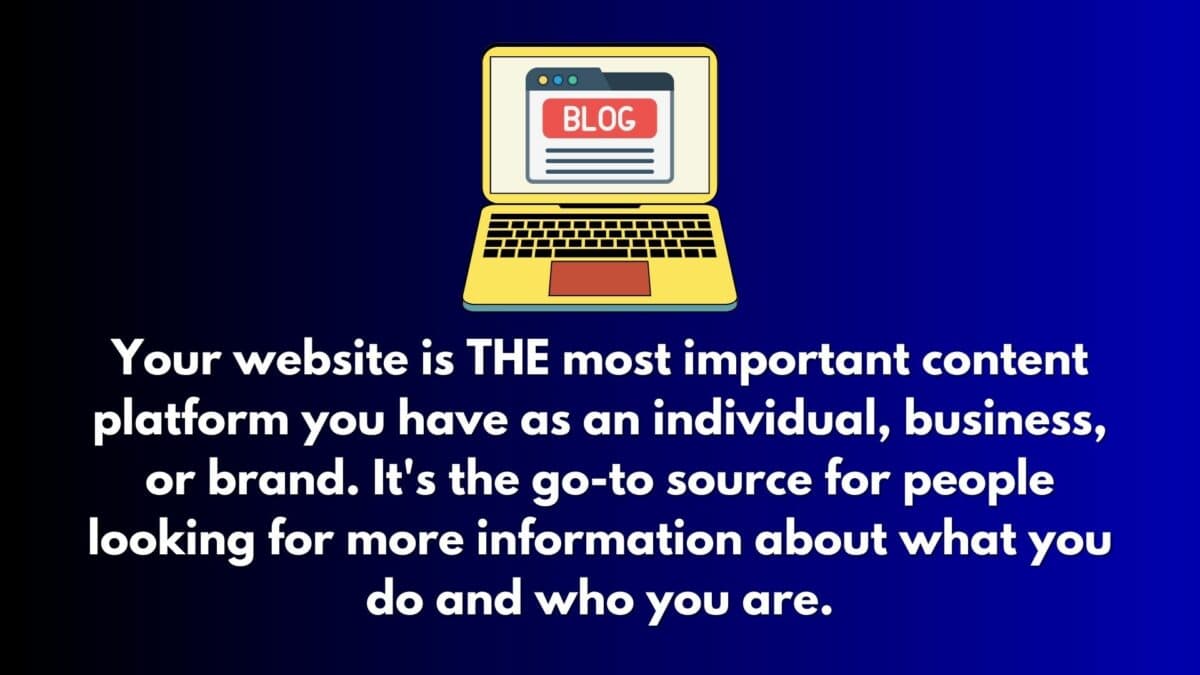
Creating quality blog posts can help drive organic traffic, convert leads, and build relationships with other industry professionals. Plus, there are a lot of benefits to blogging.
For starters, blog posts are great for SEO, which can help to increase your online presence and attract more qualified leads. You can repurpose blog content such as infographics, Instagram posts, email newsletters, and more.
Research has also shown that businesses that blog more get more traffic, leads, and engagement. And unlike the social media platforms mentioned above, your website doesn’t have a constantly changing algorithm.
This means that your content stays visible and accessible, which can help to drive more traffic in the long term.
Website content and blogging can help create a sense of connection with your readers and provide a “home base” for you to share whatever you want.
Email Marketing
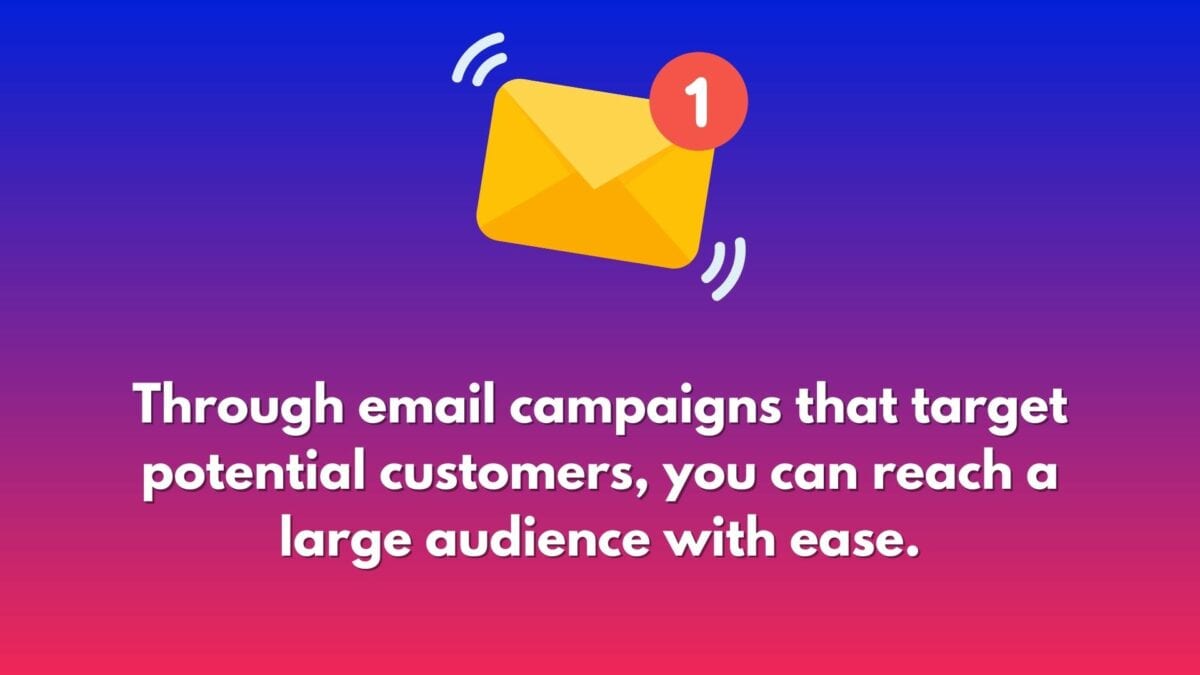
Email marketing is an effective way of funneling people who’ve consented to receive emails from you to provide more inside details about purchasing products and services.
Newsletters
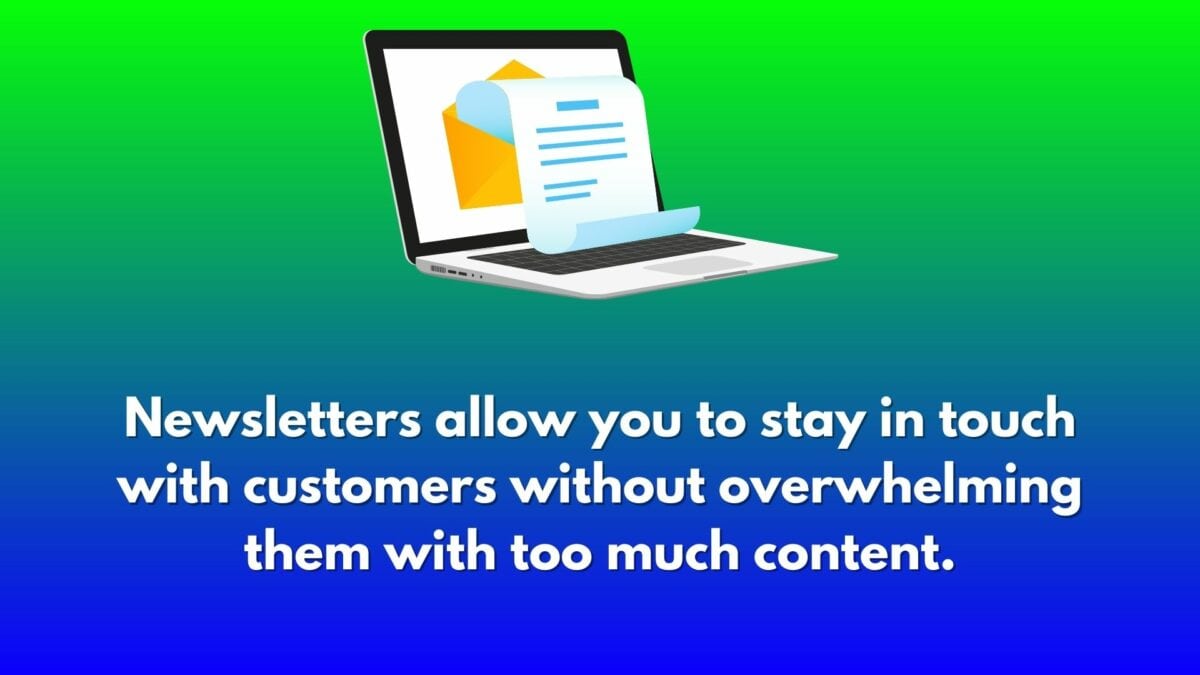
Newsletters are a great way to keep your audience informed and engaged.
You can let them know about upcoming events, product releases, or services, as well as share interesting stories or educational content.
How to Create High-Quality Content That Drives Engagement
Step 1: Have a Goal
Before doing anything, you need to have a goal for your content.
Having a clear goal will help guide the planning and creation of your content.
Step 2: Research Content Ideas
Here are some simple steps you can take to research content ideas that’ll resonate with your audience.
- Keyword Research: Finding out what keywords your audience is using in search engines is a good practice to discover potential topics for content because you’re able to find out what questions they’re asking without needing to ask them.
- Feedback from Customers: Getting feedback from your existing customers can be invaluable in uncovering content ideas they may be interested in. You can ask them through email or surveys, listen to customer call recordings, or look through support email replies.
- Put Yourself in Your Audience’s Shoes: The best advice I’ve heard for creating valuable content is to imagine what questions I had when first starting out. When you think about your audience as an earlier version of yourself, it’s easy figuring out what information your audience needs to hear. Another way to find out what topics people are asking about in your area of expertise is visiting sites your audience hangs out on, like Quora.
- Brainstorm: Brainstorming is a great way to come up with multiple content ideas to create in advance. This saves you time compared to brainstorming and creating content every single day.
- Analyze Competitors’ Content: It’s important to know what topics your competitors are writing about in your space. This will help you differentiate your brand voice and content. Identify any gaps in their content strategies and make your content stand out from theirs.
Step 3: Create a Content Calendar
Using a content calendar is very helpful if you want to have an online presence that stands out because it keeps you consistent.
It guarantees you’re providing fresh, regular material for people to interact with, and helps you plan, stay organized, and maintain a consistent presence on platforms.
This ensures more people in the target audience can access the content you create, which increases the chances of them engaging with it.
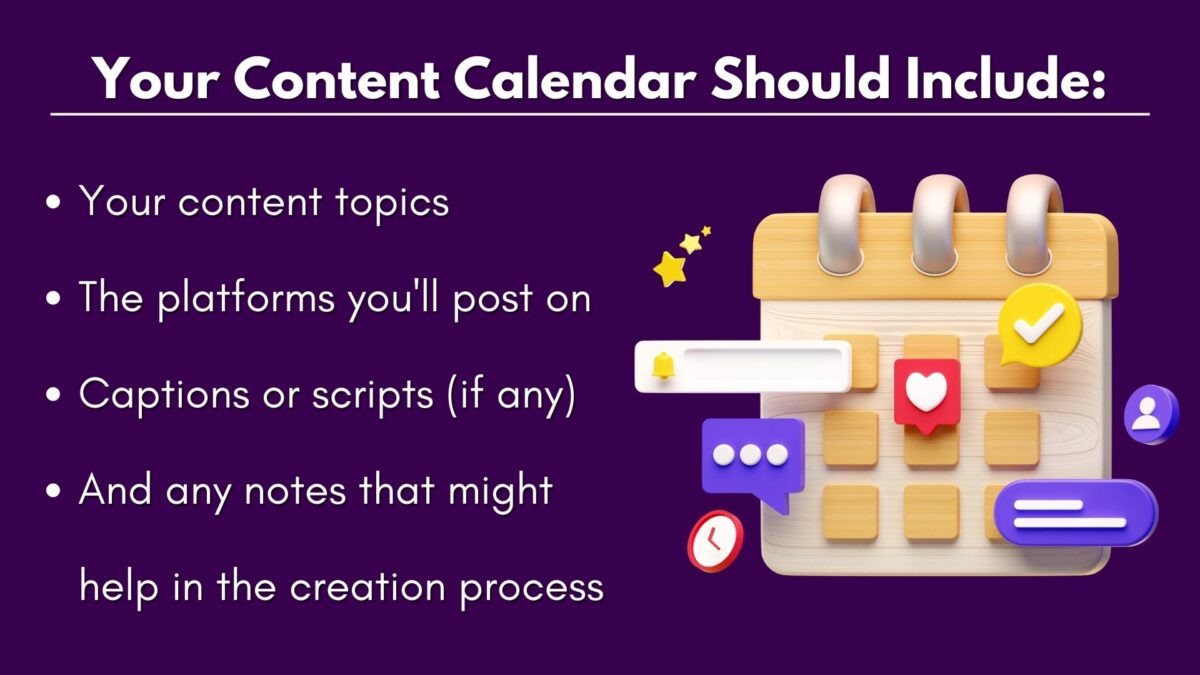
Step 4: Use Content Templates
Content templates can significantly help create high-quality content faster.
Templates provide on-brand consistency and a structure to follow, making it easier to create compelling and visually appealing pieces of content.
You can use design templates for different content on websites like Canva.
Sample Content Creation Process For Creating Your Content
Choose Your Medium
Choose the medium that works best for your content and your audience. You might decide to use videos, podcasts, or graphics instead of written content.
Write to Your Persona
You should tailor your content to your target audience. Use their voice, their euphemisms, and their humor to make sure your content resonates with them.
Tell Them Why
Make sure your audience knows why your content is important to them. Write compelling titles, supporting information, and other teasers to compel your audience to read your content.
Create Something Unique
Don’t simply regurgitate information that’s already out there. Add a unique style or cite some new research to highlight your points.
Stick To One Idea
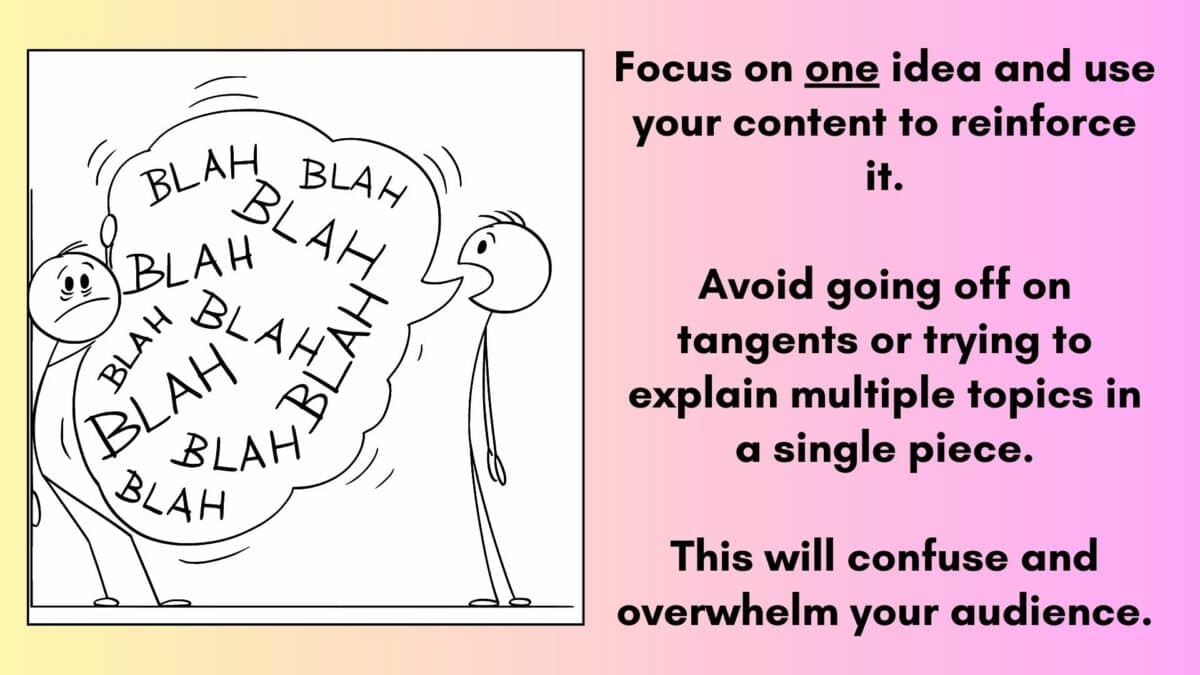
Stay True To Your Voice
Resist the urge to impress your audience with fancy words or a large vocabulary if they don’t speak that way.
Be Clear and Concise
Don’t ask your audience to sift through big words or confusing metaphors. Keep your content clear and to the point.
Follow SEO Best Practices (If Necessary)
Make sure you optimize your content for SEO by doing some keyword research, using the right keywords, meta descriptions, and other SEO best practices, especially if it’s a blog post or YouTube video.
Things To Do After Posting Your Content
Just because you’ve hit publish on a piece of content doesn’t mean you’re done. You still need a content marketing strategy.
Publish and Promote
Use other channels to promote your content. Share it on social media, to your email subscribers, etc. to get the word out.
Engage on Social Media
Engaging with your audience is one of the most important things you can do after posting content. Monitor comments, answer questions and provide feedback to show that you care about what your readers have to say. And don’t forget to customize your message for each platform.
Try Pay-Per-Click Advertising
If you have a budget to spare, you can take advantage of pay-per-click (PPC) advertising to get your content in front of new audiences.
You can do this type of advertising on social media channels, search engines, or other websites.
Re-Purpose and Repost Content On Different Platforms
Creating and repurposing content can be a great way to get the most out of your content marketing efforts. You can repurpose and post your content in different formats, such as blog posts, videos, or podcasts for maximum reach.
Measure Your Results
Analyze the results of your content creation efforts and make adjustments for future pieces if necessary. Measurement tools like Google Analytics can help track metrics, such as page visits.
Review and Update Your Content Once a Year
If something in your content becomes outdated or inaccurate over time, updating it to the most up-to-date information is important. Take some time to go through your older content and see if it is still relevant.
Need Help With Your Content Creation?
If you need help with your content marketing, existing content you’ve created, or new marketing material, call us.
We’re Red October Firm, a content marketing agency in Bloomfield, Connecticut, and we’d be happy to help no matter where you’re at on your content creation journey.
We also wrote an eBook CONTENT DONE RIGHT that’ll teach you how to create effective content in less than 2 hours.

